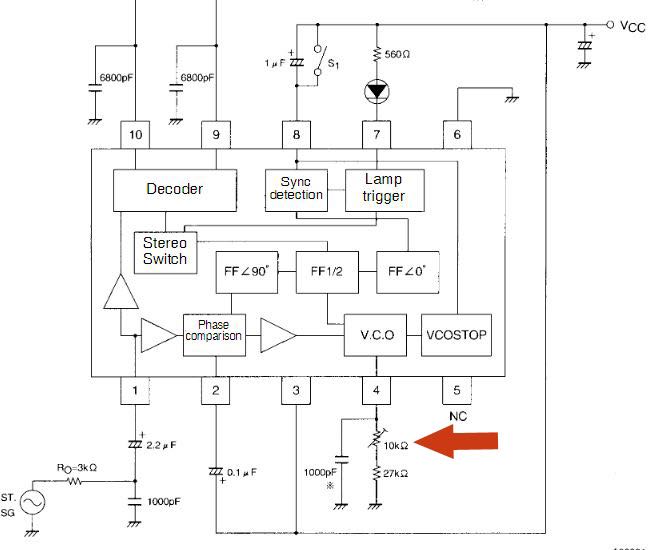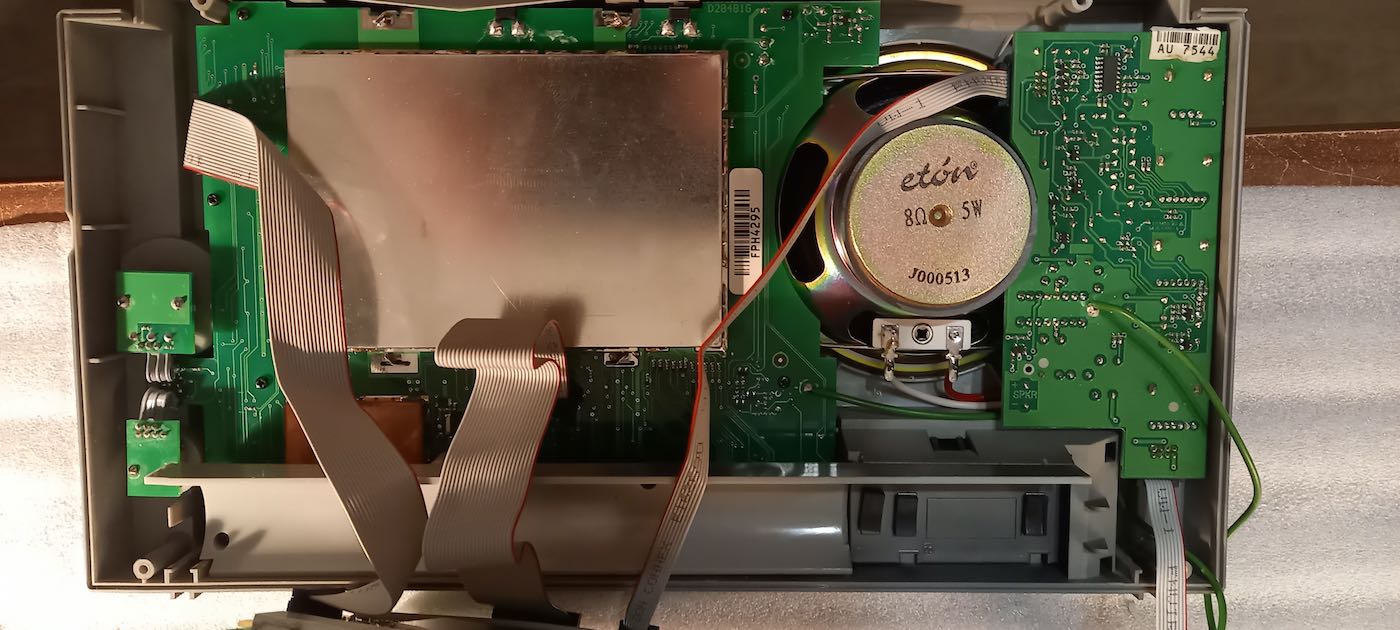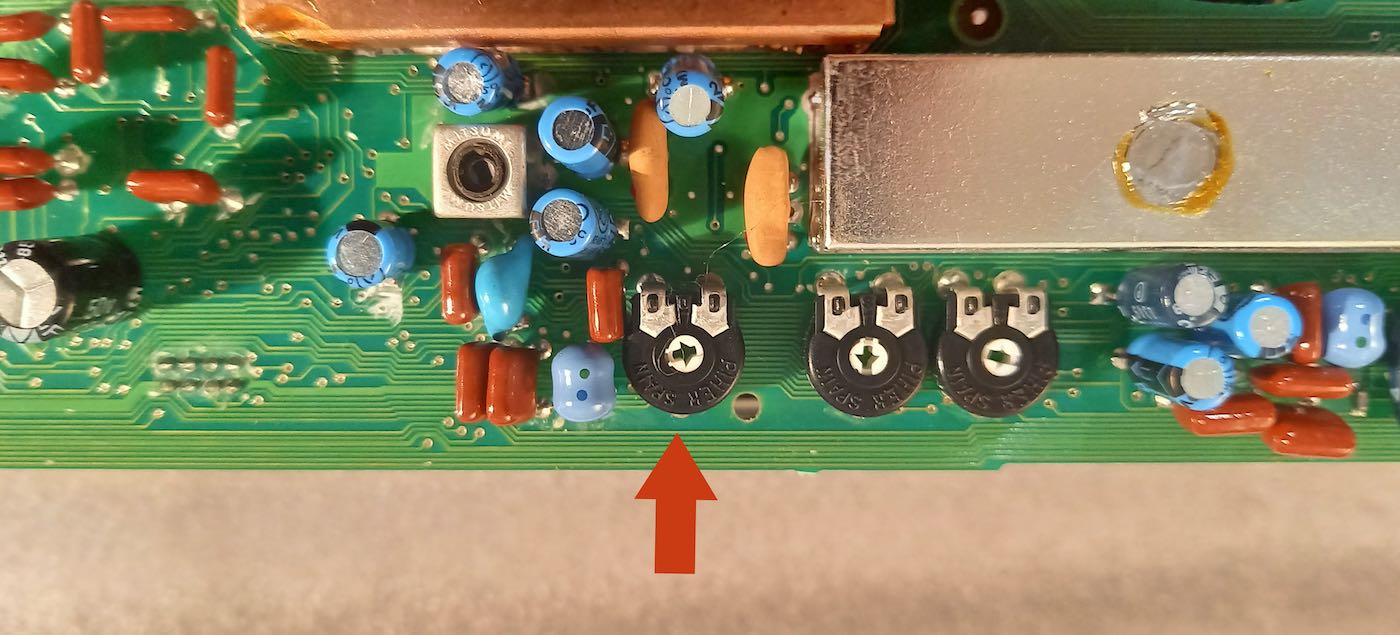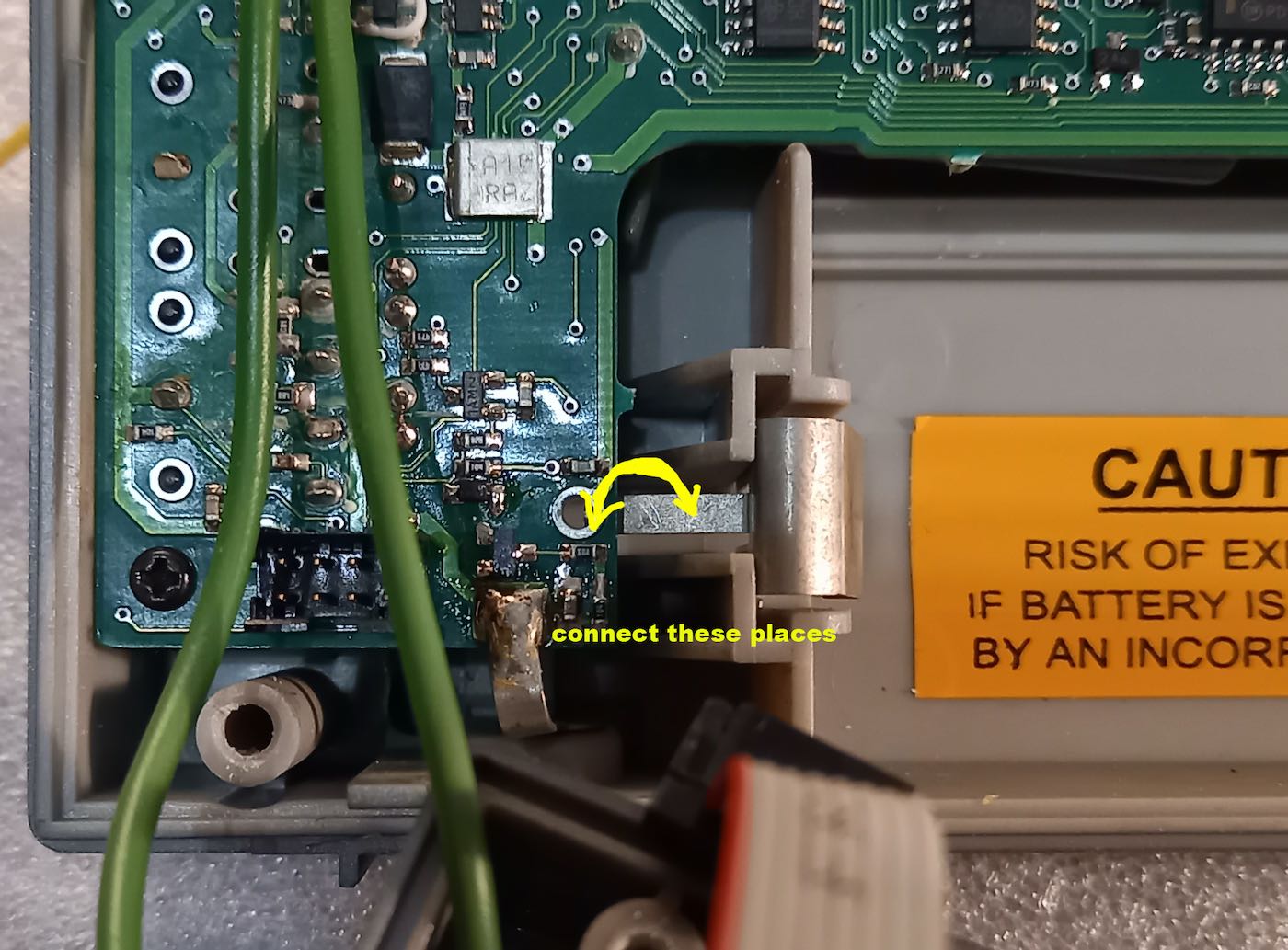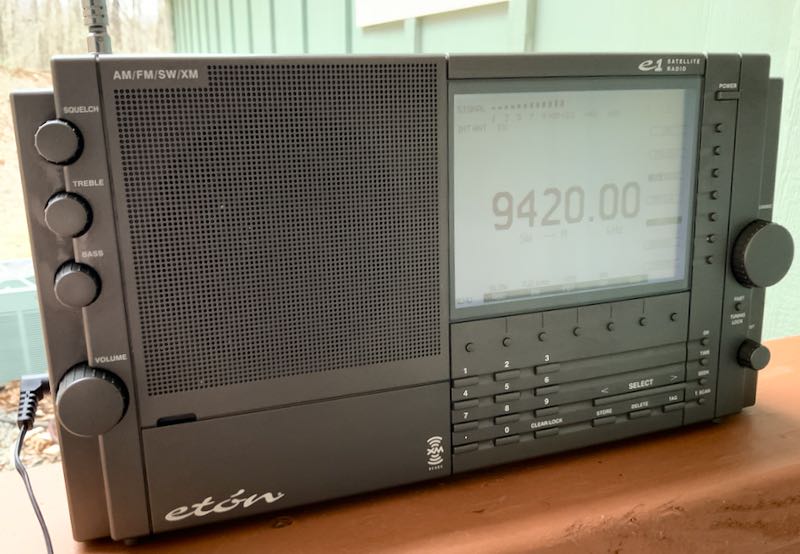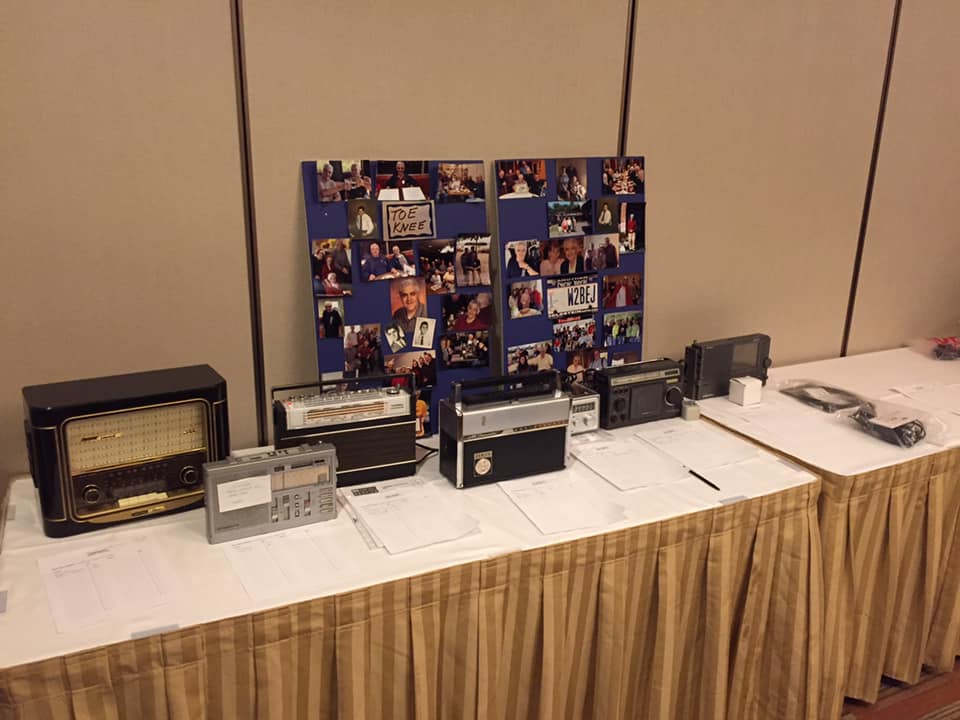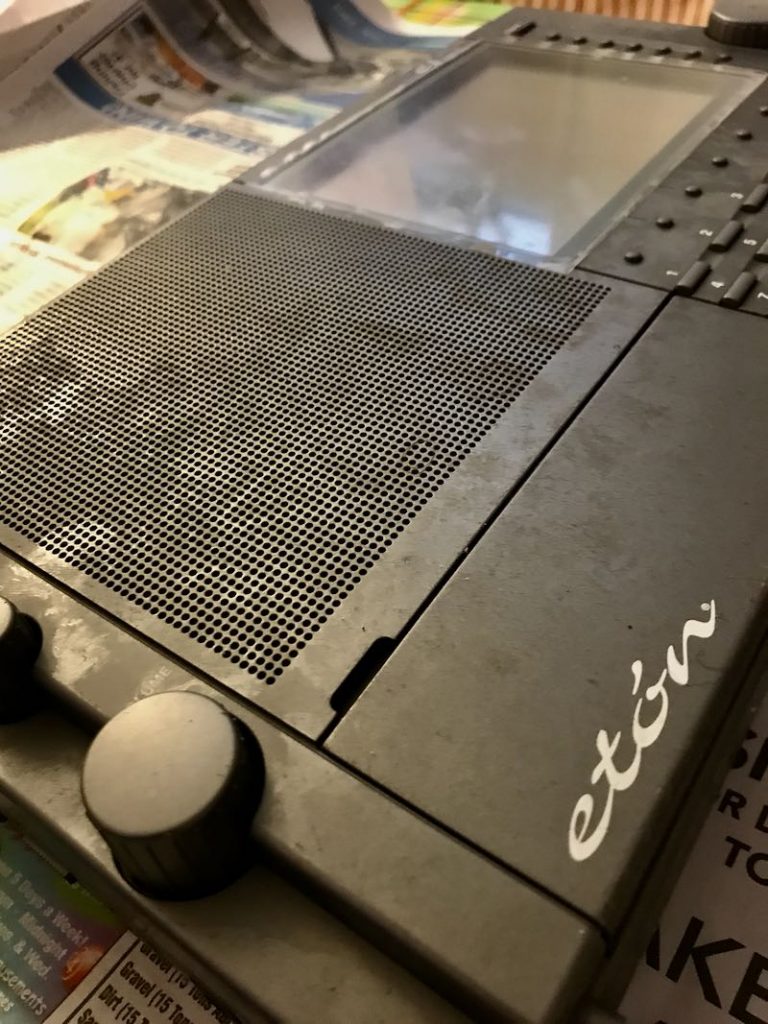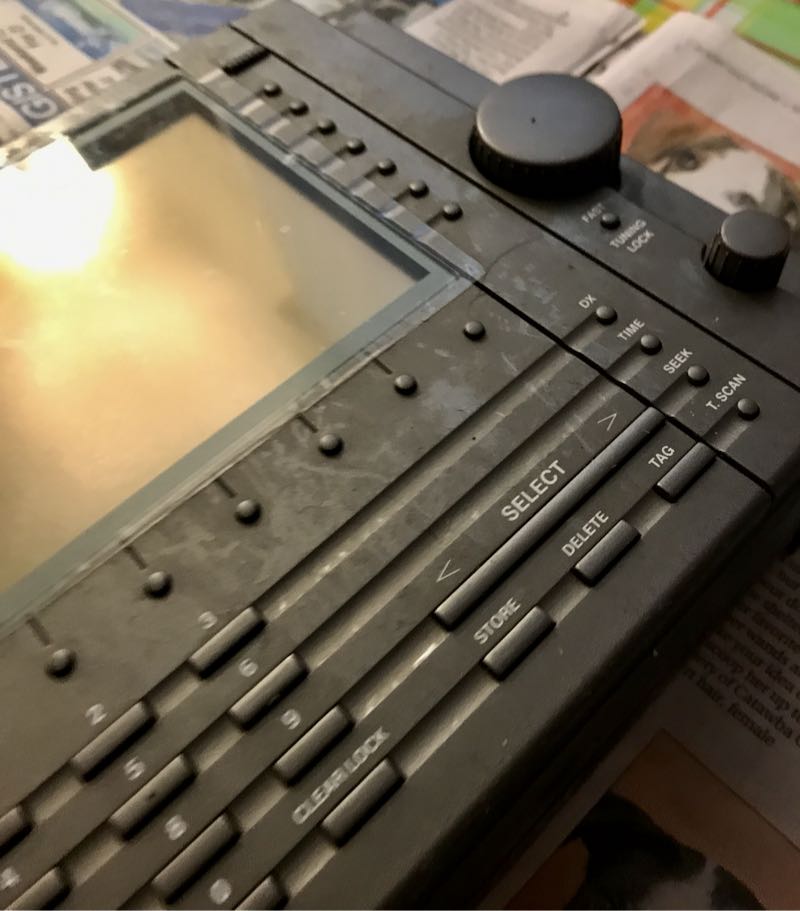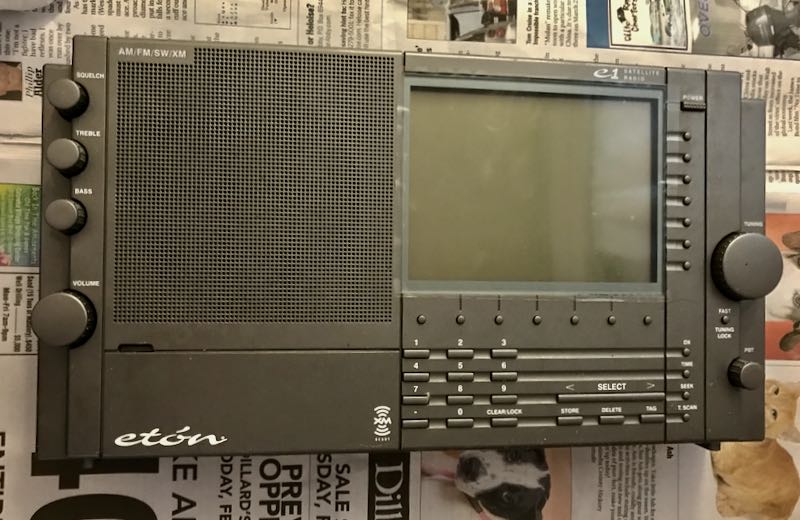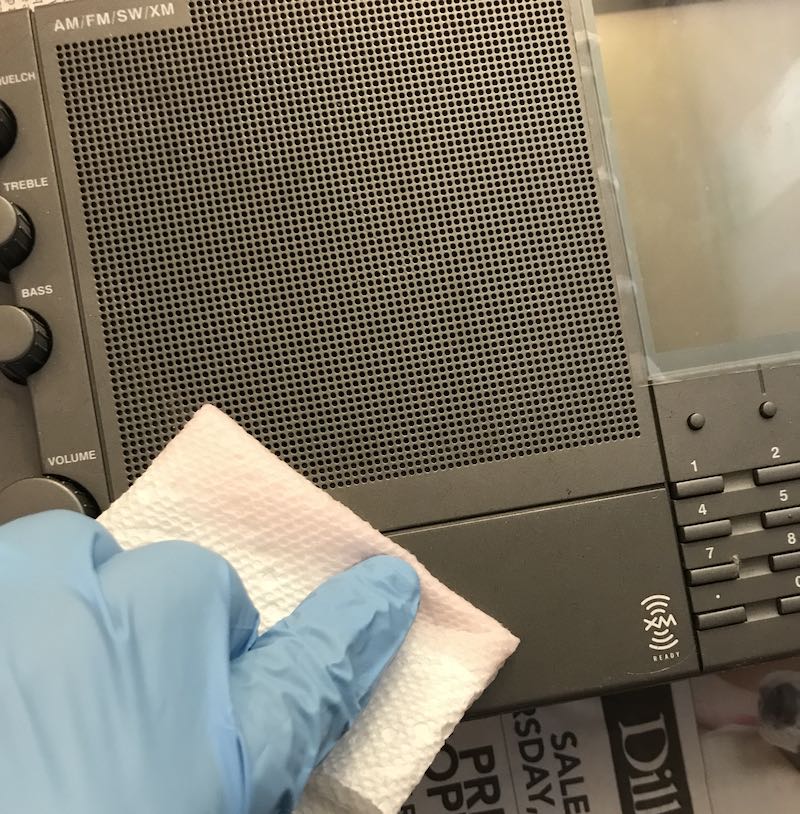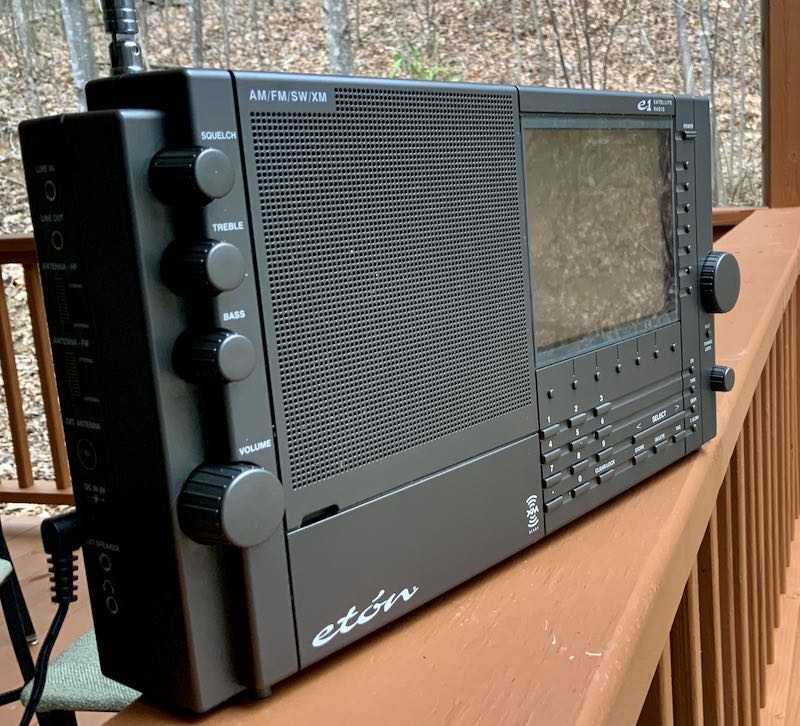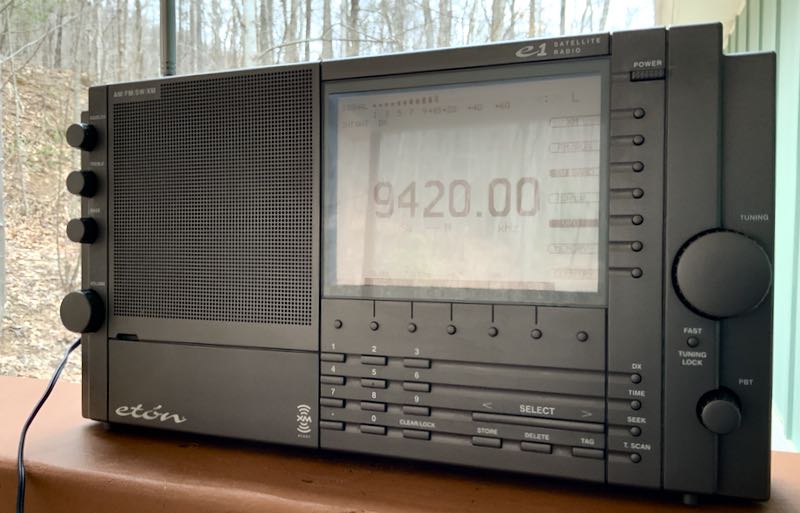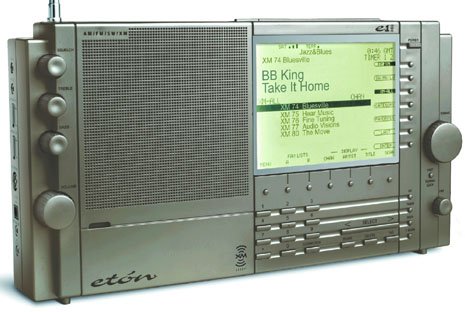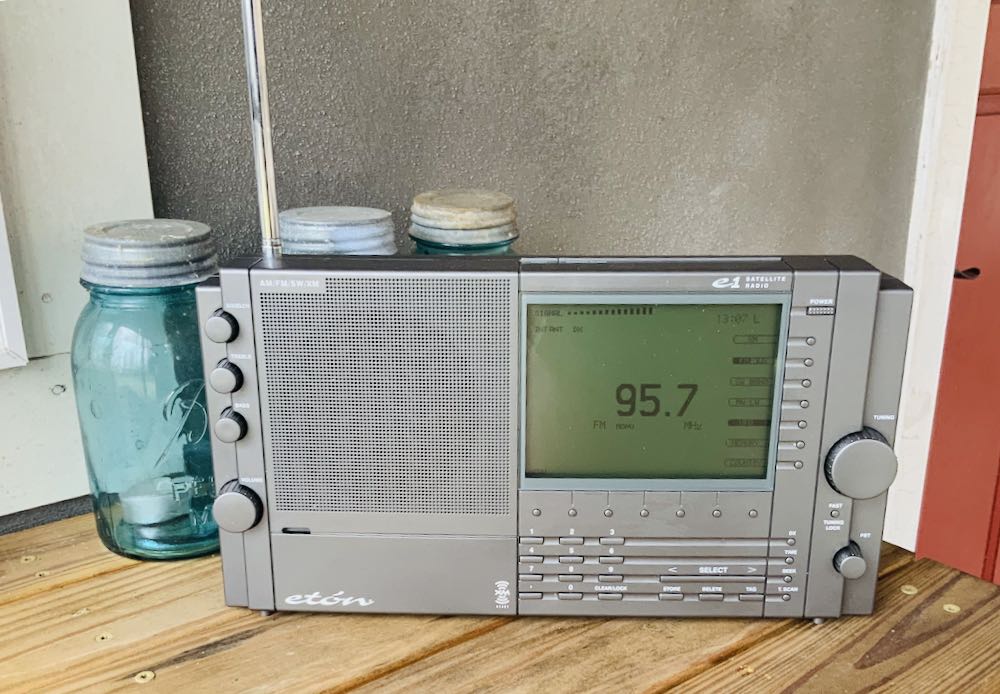 Many thanks to SWLing Post contributor, Pavel Kraus, who shares the following guest post:
Many thanks to SWLing Post contributor, Pavel Kraus, who shares the following guest post:
Eton E1 – fault in stereo reception
I recently became the owner of an Eton E1 receiver, which I obtained on eBay from the USA.
The receiver is great, everything worked, error-free display. The only problem was that even FM and strong local stations did not play stereo even though stereo reception was set in the menu. The stereo text on the display flashed several times when the stations were not tuned in precisely, but after the stereo tuned, the text went out. I know that stereo reception is not the most important thing for this receiver, but it bothered me that there was a defect at all.
The Sanyo 3335 stereo decoder is used in this radio. The stereo reception switching threshold can be set with a 10kohm potentiometer which is connected to terminal 4 of the integrated circuit:
I disassembled the radio by loosening the screws on the back of the radio. The receiver is divided into two parts. I removed the XM module and disconnected the part of the radio with the display from the flat wires on the second printed circuit board of the radio.
I then removed the screws on the circuit board located at the back of the radio.
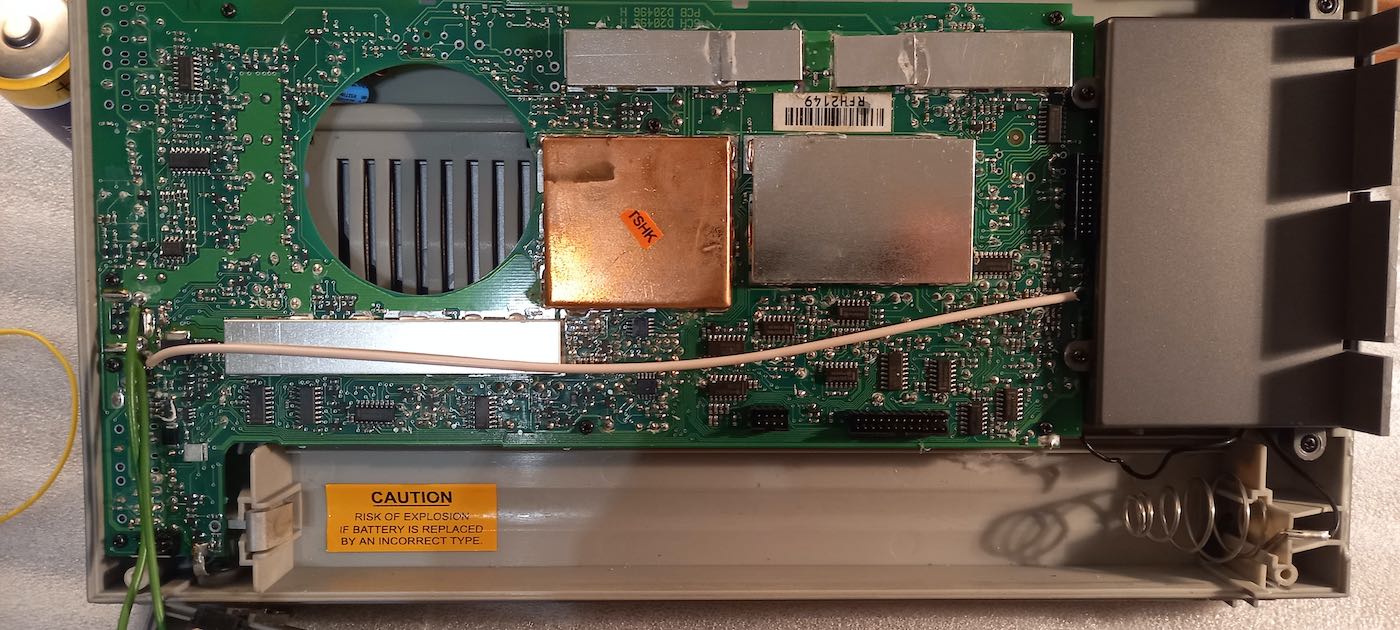 I removed the printed circuit board and found a matching resistor trimmer on the other side of the circuit.
I removed the printed circuit board and found a matching resistor trimmer on the other side of the circuit.
Then I connected these two points with a wire (when running on batteries) so that I could turn on the receiver:
After tuning in to a strong local transmitter, I carefully turned the trimmer until the stereo sign lit up and listening to the headphones made sure the sound matched the stereo. I repeated this at several local stations.
The receiver now plays stereo perfectly and the settings do not affect other parameters of the receiver. After assembling the radio, I was able to enjoy quality stereo reception.

